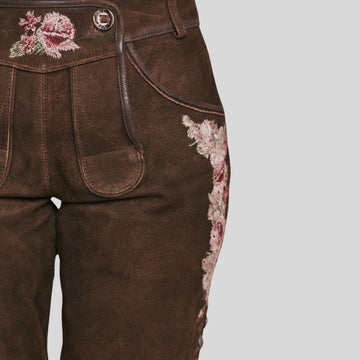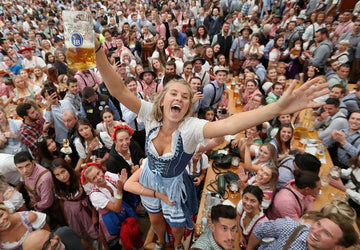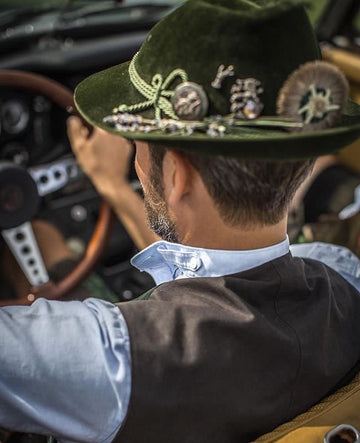Oktoberfest—the mere mention of it brings to mind lively beer halls, the clinking of massive beer steins, upbeat music from brass bands, and the sight of colorful traditional costumes. Despite its name, this globally famous festival kicks off in September each year, a detail that often puzzles newcomers to the event. So, why is Oktoberfest in September, not October? In this blog, we’ll unravel the historical roots and practical reasons behind the date shift, while also diving into the significance of German Traditional Clothing, Oktoberfest outfits, and the vibrant heritage that defines this festival.
The Birth of Oktoberfest: A Royal Beginning
The origins of Oktoberfest can be traced back to a royal wedding in Munich, Bavaria, in 1810. On October 12th, Crown Prince Ludwig, who would later become King Ludwig I, married Princess Therese of Saxony-Hildburghausen. The citizens of Munich were invited to celebrate the wedding with five days of festivities that included horse races, music, dancing, and lots of food and drink. The event took place on the fields in front of Munich’s city gates, which were later named “Theresienwiese” (Theresa’s Meadow) in honor of the bride.
The horse races were such a success that the citizens and royalty decided to hold the event annually. Over the years, additional activities were added, such as agricultural shows and beer tents. This yearly event, which originally started in October, eventually became the Oktoberfest we know today.
Why the Shift to September? Practical Reasons Prevail

As the years went by, Oktoberfest organizers found themselves facing a challenge: Munich’s unpredictable October weather. While the early days of the festival in October were often met with sunny skies, the later days were cooler, with shorter daylight hours. Holding an outdoor festival in chilly and often rainy conditions was far from ideal. As a result, in the late 19th century, festival organizers made the practical decision to move the start of Oktoberfest to September.
By shifting the festival’s start date to mid-September, organizers could ensure milder weather, longer daylight hours, and more comfortable evenings for festival-goers. This shift allowed the vibrant beer gardens, music, and parades to flourish without being hampered by the chill of October nights. Even though the festival now starts in September, it traditionally runs into the first weekend of October, preserving the event’s original connection to its name.
This adjustment was a turning point, making the festival more enjoyable and accessible for both locals and the increasing number of international visitors. Today, Oktoberfest typically runs for 16-18 days, beginning in mid-September and ending on the first Sunday in October. Despite the earlier start, the spirit of the event remains as strong as ever, anchored in Bavarian tradition and cultural pride.
The Role of German Traditional Clothing in Oktoberfest
One of the defining features of Oktoberfest is its celebration of Bavarian culture, and no element of this culture stands out more than the German Traditional Clothing worn by festival-goers. Lederhosen and dirndls are more than just costumes—they are expressions of pride, heritage, and a connection to the past.
Lederhosen, which translates to "leather trousers," were traditionally worn by men for hard, outdoor work. The durable nature of leather made them ideal for activities like farming and hunting. Today, lederhosen have transcended their utilitarian origins and become a symbol of Bavarian identity, particularly during Oktoberfest.
For women, the dirndl—another key element of German Traditional Clothing—is a fitted bodice dress with a full skirt and apron. Originating from rural and peasant wear, the dirndl has become an iconic representation of Bavarian women’s traditional attire. The style, fabric, and embellishments of dirndls vary, but each outfit is crafted with care, often representing the wearer’s personality or regional pride.
During Oktoberfest, these outfits are worn not just by locals but also by visitors from all over the world who want to participate in the full cultural experience. Wearing Oktoberfest Outfits like lederhosen and dirndls connects people to the deep-rooted traditions of Bavaria, creating a shared sense of community among festival-goers.
The Evolution of Oktoberfest Outfits: From Tradition to Trend
While the origins of lederhosen and dirndls are steeped in tradition, their role at Oktoberfest has evolved over time. Today, Oktoberfest outfits blend both tradition and modern fashion trends. Designers have introduced variations that range from classic, hand-crafted leather to more contemporary styles with unique colors and patterns. While some opt for authentic German Traditional Dress made from materials like suede ,leather or cotton, others experiment with bold fabrics and bright hues, adding a modern twist to the classic attire.
The details of these Oktoberfest outfits are what truly set them apart. Lederhosen often feature intricate embroidery, belt buckles, and suspenders, while dirndls come in various lengths and styles, with options to accessorize with scarves, shawls, and jewelry. Every element of these garments is carefully considered, ensuring that each outfit is a blend of tradition and individuality.
For those attending Oktoberfest for the first time, choosing the right outfit can feel like an important rite of passage. Some opt to rent Oktoberfest outfits to fully immerse themselves in the festival experience, while others invest in high-quality pieces that can be worn for years to come. Whether you’re going for a traditional or contemporary look, wearing German Traditional Clothing at Oktoberfest is seen as a sign of respect for the festival’s cultural heritage.
Oktoberfest in Modern Times: A Global Celebration of Bavarian Culture
Today, Oktoberfest is one of the world’s largest and most famous festivals, attracting millions of visitors from across the globe. While Munich remains the heart of the celebration, smaller Oktoberfest events take place in cities worldwide, from New York to Tokyo. However, nothing quite compares to the authentic experience of attending Oktoberfest in Munich, where tradition, culture, and revelry blend seamlessly.
At the core of the festival is its commitment to preserving Bavarian culture. Along with beer and food, German Traditional Clothing and Oktoberfest outfits play a crucial role in maintaining the festival’s cultural authenticity. While Oktoberfest is famous for its large beer tents and steins filled to the brim with local brews, the festival also includes parades, traditional Bavarian music, folk dancing, and agricultural shows.
One of the most anticipated events during the festival is the traditional costume parade, where thousands of participants from various regions of Bavaria, Austria, and Switzerland march through Munich’s streets, dressed in their respective German Traditional Dress. This parade showcases the diversity of regional costumes, from different variations of lederhosen to the beautifully decorated dirndls. It’s a visual spectacle that highlights the rich cultural heritage of the region.
Preserving Bavarian Tradition in a Globalized World
In a rapidly globalizing world, festivals like Oktoberfest offer a vital link to the past. Wearing Oktoberfest outfits and participating in the festival’s traditions is not just about having a good time—it’s about keeping Bavarian culture alive for future generations.
The decision to start Oktoberfest in September is a reminder that even deeply rooted traditions can evolve over time to adapt to changing circumstances. The shift in dates has allowed the festival to flourish and grow, attracting people from all walks of life while still honoring the festival's original spirit.
In a world where cultural celebrations are becoming increasingly commercialized, Oktoberfest stands out as a festival that has managed to retain its authenticity. Whether you're enjoying a stein of beer, listening to the sounds of traditional brass bands, or admiring the craftsmanship of German Traditional Clothing, you're participating in a centuries-old tradition that remains as vibrant and meaningful today as it was over 200 years ago.
Conclusion:
While it may seem odd for Oktoberfest to take place in September, the reasons behind the shift make perfect sense when you consider Bavaria’s unpredictable autumn weather and the desire to create the best possible experience for festival-goers. And although the dates may have changed, the heart of the festival remains the same: a celebration of Bavarian culture, community, and heritage. From the iconic Oktoberfest outfits to the enduring traditions of German Traditional Clothing, Oktoberfest continues to thrive as a testament to the richness of Bavarian tradition. So next time you attend the festival, whether in Munich or elsewhere, remember the rich history and cultural significance behind every aspect of this world-famous event.




